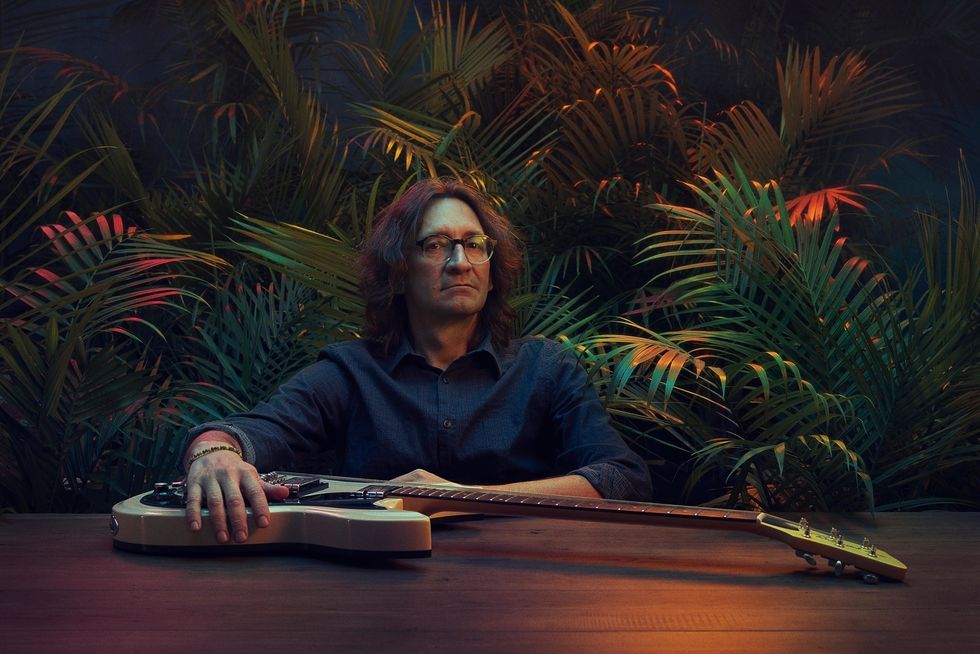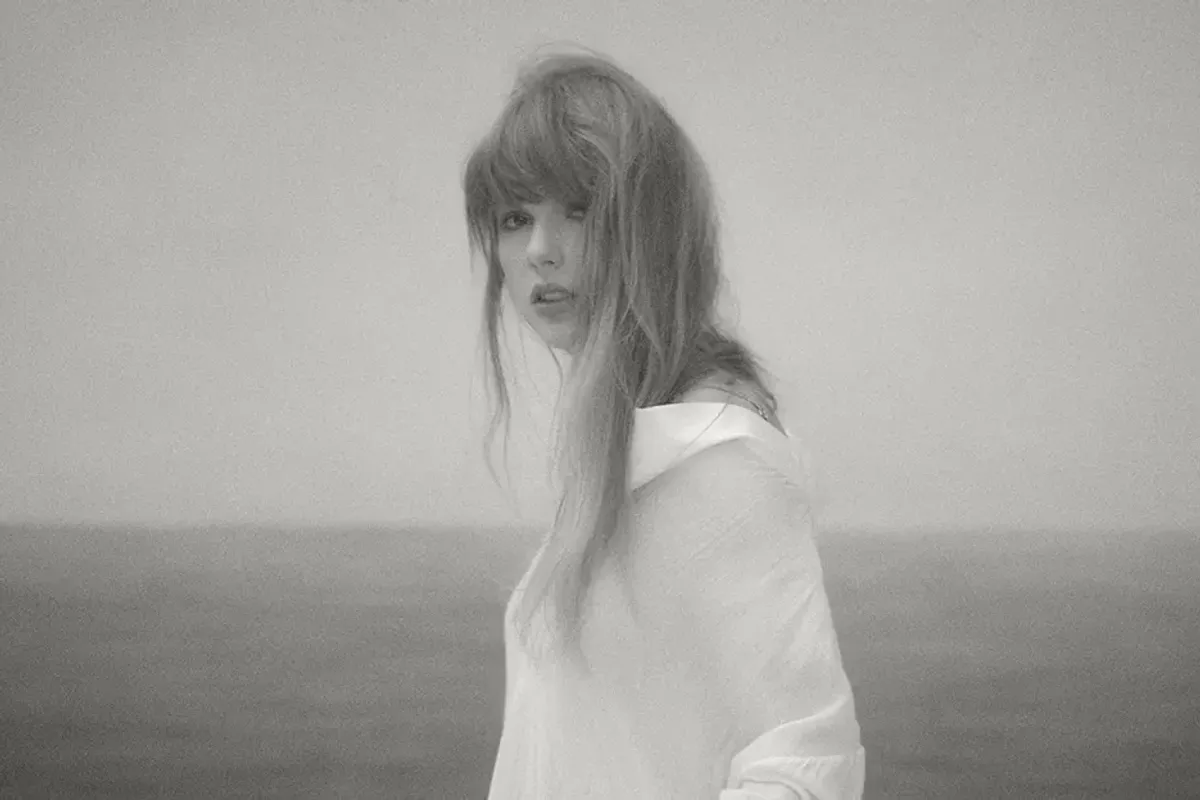Five Questions With… Roberto Lopez
The Colombian-Canadian musician and composer pushes the boundaries of modern Latin music with hip arrangements, as heard on new album KaleidoStrópico. Here he discusses its sounds, his favourite tunes, his musical journey, and a Nova Scotian road story.

By Jason Schneider
Roberto Lopez is a Colombian-Canadian musician and composer who pushes the boundaries of modern Latin music with hip arrangements. Under Colombian grooves, he unabashedly adds jazz, funk and electronic music to the mix. His latest album, KaleidoStrópico, out now, continues to explore those combinations of sounds, resulting in a unique sonic landscape and a statement on the many influences he’s absorbed.
Born in Bogotá, Lopez was part of the wave of musicians responsible for the Rock en Español movement in the 1990s. Along with his band Doble UC, they dominated the local charts between 1991-1993 and are now part of several compilations documenting the history of Colombian rock.
In 1994 Lopez moved to Montreal to pursue music studies at Concordia University. There, he became involved in many projects, ranging from jazz to salsa, to hip-hop. He also composed music for several documentaries, animated films, video games and theatre production, earning a Gemeaux Awards nomination for best original score along the way.
He launched the Roberto López Project in 2005 with musicians from all the corners of the Americas, crafting a sound that explored Latin grooves in an urban context. This led to the Afro-Colombian Jazz Orchestra in 2011, a tribute to some of the greatest Colombian composers known for the Cumbia big band sound popular in the 1970s.
Since then Lopez has established himself on the national jazz festival circuit and continued to hone his approach that brings together the best of North and South American music. KaleidoStrópico is available now through robertolopez.ca where you can also find info on his upcoming shows this summer.
What makes KaleidoStrópico different from your past work?
When I started writing these tunes, I wanted to feel completely free in my style and groove explorations. I wanted to dare to go to different places with my music. In that sense, this album is very different than my previous albums, where my explorations were always somehow limited by the style. KaleidoStrópico ventures away from Colombian and Cuban grooves and dives into funk and electronica territory. You can hear it in the grooves and the horn arrangements. I also wanted to push even further my explorations on Afro-Colombian grooves like the Cumbia and the Porro, and take them into a contemporary format. I also explored the Kora as a meeting point between Latin music and African music. I feel I was able to touch on all my musical influences throughout my career in this album; it is full of musical surprises. It is a reflection of how I see music today, and also a plunge into my sonic world.
What song(s) on the record are you most proud of and why?
They each have something interesting and unique for me, but I’ll go first for Getsemani. This song started as a traditional Porro—a style from Colombia’s Caribbean coast. But it quickly evolved into a richer composition bringing elements from Champetain the guitar lines, jazzy improvisation sections where the horns and the guitar solo, and a great dialog between the guitar and the horn section in the melody. For someone who wants to hear great musicians and a cool developing structure, this is the tune.
The second tune I would pick up is A Pachanguear, which is slang in Colombia for “party.” This tune has a Cuban guajira underlying in the groove, with accents displaced to make it more interesting, and a soaring electric guitar leading the melody. I feel this tune has the raw energy of a rock tune, with Latin phrasing, and a funk style section where the groove is at the center. At the end of my guitar solo, I paraphrased the great Carlos Santana—a little tribute to the musician who defined electric Latin guitar.
How would you describe your journey from Colombia to Canada and how has your music evolved since you've lived here?
I started performing in Colombia during the Rock en Español movement in the early 90s. I had taught myself to play guitar and learned by playing with other musicians. I love writing music, and I needed to expand my vocabulary, so I moved to Montreal to pursue a degree, mainly studying jazz, at Concordia University. There, I often got asked how to play Colombian music, and I realized that I knew little about it, so I decided to rediscover my roots.
I learned to play Colombian, Cuban, Brazilian, and Dominican music thanks to the many musicians from around the world living in Montreal. I travelled to Cuba and Colombia to further learn with masters. My music began to evolve by adding and mixing these grooves to jazz concepts in arrangement and harmony, and slowly I began creating my own vocabulary. It was very different, and richer, than the pop-rock I was playing when I started. I also realized that my music has many North American influences, a result of living in Montreal for the past 25 years. The music I make today is from my perspective of living in Montreal. If I had stayed in Colombia, I would still sound like me, but my music would certainly not sound the same.
What's been the biggest change in your life over the past year?
I just finished a DESS in management of cultural organizations at HEC Montreal. It is a diploma, just short of a master’s degree. For the past three years, I’ve been studying towards this diploma, while at the same time I’ve released two albums including KaleidoStrópico. I’ve also toured western Canada, Chile, and performed showcases at Mundial Montreal and Rideau where I won the ROSEQ/RIDEAU award. All of this on top of being a full-time Dad!
Suddenly I have this time back in my hands. Being able to slow down has been difficult because, as musicians, we have the enormous pressure of always being releasing new material, performing all over and being successful—whatever that means today. I’m taking a small break this summer to spend time with my family. I feel it is crucial to charge my batteries so I can keep doing what I love.
What's your best touring story?
We were doing a cross Canada tour, starting in the west and eventually landing in Nova Scotia. After a show at the Chester Playhouse, we drove 10 hours to Canso to play the Stan Rogers Folk Festival. As with many folk festivals, you perform several times, but since our schedule was tight, we were only there for one day before heading to the Halifax Jazz Festival. I found out we were scheduled three times during our day in Canso, plus we were playing at the after party at 1:30 a.m. I also found out the festival had booked our lodging 45 minutes away from the festival site.
After performing our three sets during the day, we were pretty tired. We figured we would sleep a few hours, play the after-party and leave at 6:00 a.m. for Halifax. It all seemed brutal, but we were on the road. But with almost three additional hours just going back and forth from the hotel, I asked the festival director if there was someone else who could do that driving. He couldn’t make that happen, so he decided to cancel the after-party set. I don’t think any musician feels good about turning down any opportunity to play, but when I told the guys in the band, they all said, “You are a genius, Roberto!”

















